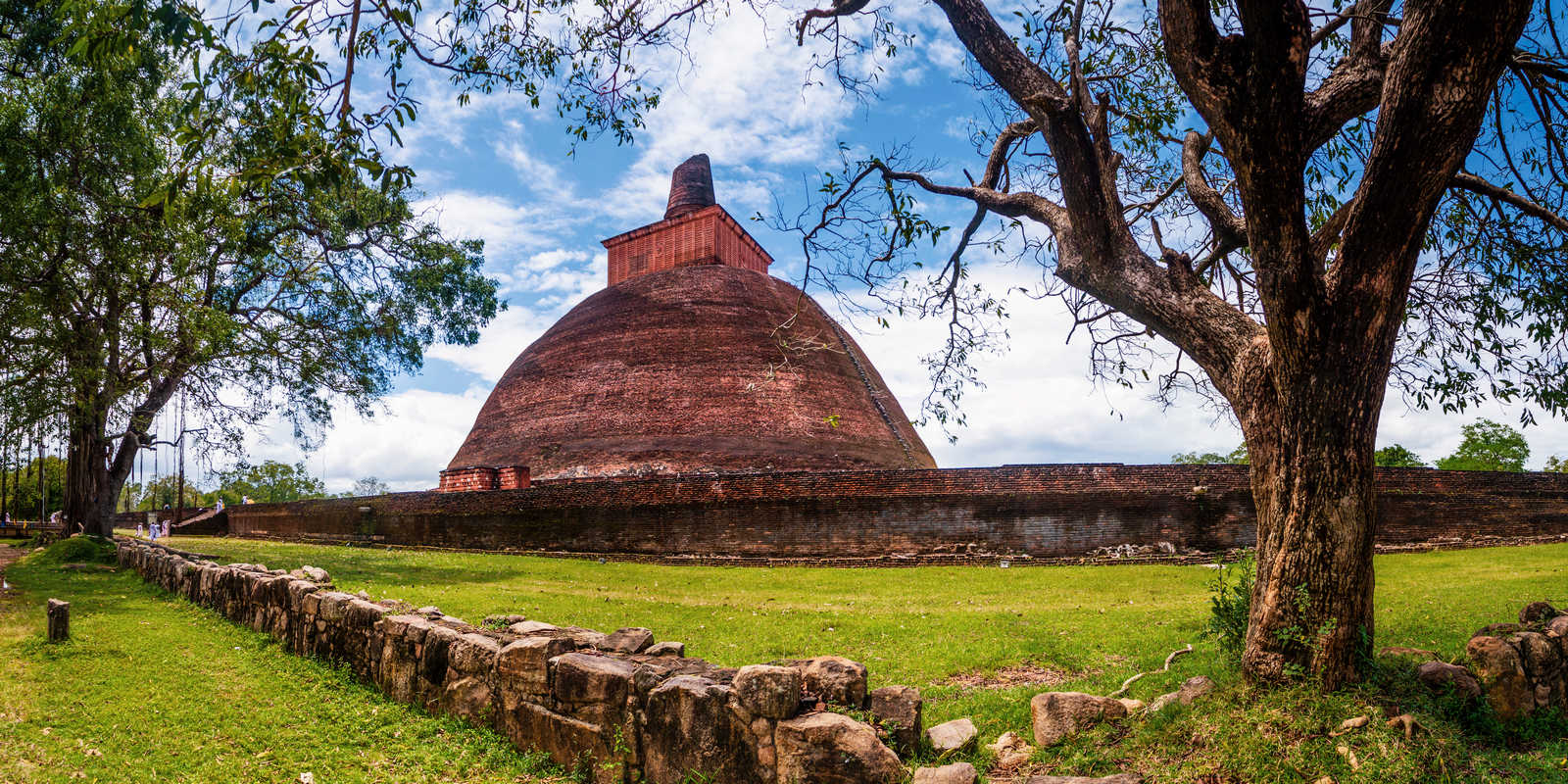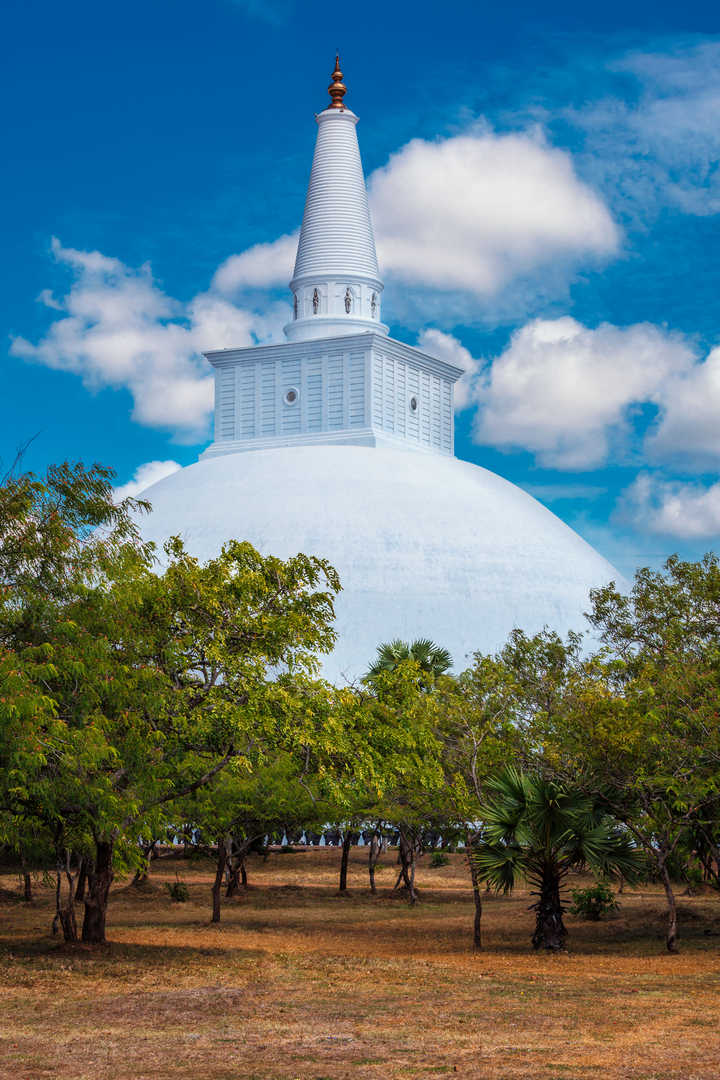As pilgrims, we are immediately intrigued by the first verse of the earliest existing (3rd-4th c. CE) Sinhalese history, The Dipavamsa, (Chronicle of the Island). The anonymous author opens his text by announcing that he will begin with the report of the Buddha’s visits to the isle of Lanka. And then he continues to describe the arrival of the Buddha’s relics after his parinirvana as well as the coming of the bodhi tree branch. Thus, from the very beginning of the tale, we know to expect wondrous occurrences instead of a dull history focused solely on names and dates.
The chronicles of Sri Lanka remind us that the Buddha emphasized the value of sacred space by recalling the visits of previous buddhas. Moreover, we witness the Buddha personally dispensing hair relics in order that devotees will have physical supports for their offerings and practice. He graciously accepted the invitation to sacralize a location by sitting in meditation, thus marking a particular spot as a conduit for blessings. By imprinting his blessings for future generations, we can have confidence that we are still in the presence of the Buddha when we visit such sites. Similarly, when Mahinda, the son of the Indian emperor Ashoka, arrived in Lanka, he, too, traveled to these holy spots and blessed them with offerings as well as his practice.
From the chronicles, we also learn that the close followers of the Buddha were indispensable in bringing more bodily relics, and in establishing and enlarging existing shrines. Such actions instruct us on the value placed on pilgrimage locations by key figures throughout both human and non-human history. Additionally, they encourage and inspire us to undertake a joyful pilgrimage. When we read these accounts, we observe that the early episodes describing Buddha visits feature many non-human actors. The Buddha interacts with demons of all classes, with nagas and with gods as well as humans. We witness the Buddha engaging in the enlightened activities of subduing and pacifying in order to resacralize the space and make it a place for humans to receive the Dharma. Thus, when we travel to the island, we can broaden our vision and recall the kindness of the Buddha as he interacts with various classes of beings.



